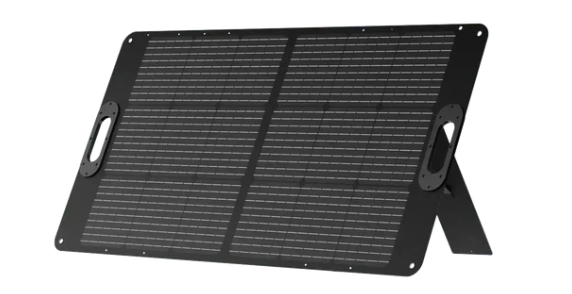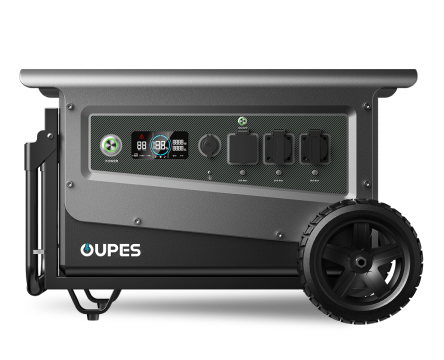
Table of Contents
- Introduction
- How Solar Panels Generate Electricity
- Can Solar Panels Work with Artificial Light?
- Comparison: Artificial Light vs. Sunlight Power Output
- Factors Affecting Solar Performance Under Artificial Light
- Practical Applications of Artificial Light Charging
- Using Portable Solar Generators Indoors
- Tips to Optimize Energy Generation Indoors
- FAQ
Introduction
Solar power has transformed the way we generate and store energy, from rooftop systems to compact portable power stations used for outdoor activities and emergency backup. However, one common question remains: Can solar panels generate electricity from artificial light? This article explores the science behind how solar cells work, the limitations of artificial lighting, and whether it’s practical to use artificial light as a power source.
According to the U.S. Department of Energy (DOE), solar panels are designed to capture energy from sunlight, which provides a full spectrum of wavelengths necessary for efficient energy conversion. While artificial lights can emit some of the same wavelengths, the intensity and energy density are much lower. Still, understanding their relationship offers insights into innovative indoor energy applications.
How Solar Panels Generate Electricity
1. The Photovoltaic Effect
Solar panels work through the photovoltaic (PV) effect, where sunlight photons strike semiconductor materials like silicon, freeing electrons and generating direct current (DC) electricity. This electricity is then converted to alternating current (AC) via an inverter for home or grid use. The key factor is the light’s energy intensity and spectrum, which determine how many electrons can be excited.
2. Sunlight’s Spectrum
The sun emits a wide spectrum of electromagnetic radiation, including ultraviolet (UV), visible, and infrared (IR) light. Solar panels are designed to respond most efficiently to this broad range, especially visible light. The average solar irradiance reaching Earth’s surface is approximately 1,000 watts per square meter (W/m²), providing the ideal conditions for energy generation.
3. Artificial Light’s Spectrum
Artificial lights—such as LEDs, fluorescent tubes, or incandescent bulbs—emit narrower, weaker spectrums. While they can mimic parts of natural sunlight, their intensity rarely exceeds 100 W/m² even at close range, limiting their ability to produce meaningful power from solar panels.
Can Solar Panels Work with Artificial Light?
1. The Short Answer
Yes, solar panels can generate electricity from artificial light, but the output is significantly lower compared to sunlight. Artificial light can produce enough energy to power small devices or charge low-capacity batteries, but it cannot sustain large-scale systems or recharge portable power stations efficiently.
2. The Role of Light Wavelengths
The wavelength and color temperature of artificial light matter. LED and fluorescent lights emit higher portions of visible light, which can activate solar cells more effectively than incandescent bulbs that emit mostly infrared radiation. Still, even the best artificial sources are far weaker than natural sunlight.
3. Measured Output Example
Experiments show that under bright indoor lighting (about 500 lux), a standard solar cell may produce around 0.1–0.5 watts per square meter. In contrast, under direct sunlight, the same panel can generate around 150–200 watts per square meter. This enormous difference demonstrates why artificial light cannot practically replace the sun for energy generation.
Comparison: Artificial Light vs. Sunlight Power Output
| Parameter | Sunlight | Artificial Light (LED or Fluorescent) |
|---|---|---|
| Intensity (W/m²) | ~1,000 | ~100 or less |
| Efficiency of Solar Conversion | 15–22% | 1–5% |
| Spectrum Coverage | Full visible + UV + IR | Limited visible spectrum |
| Usability for Charging | Excellent for all devices | Suitable for microelectronics only |
| Power Output (100W panel) | 80–100W typical | 1–5W at best |
As the table shows, solar panels under artificial light can produce some power, but not nearly enough for meaningful home or off-grid energy storage. However, it can still serve as an interesting and educational concept for low-power IoT devices, sensors, and demonstrations.
Factors Affecting Solar Performance Under Artificial Light
1. Type of Artificial Light
Different bulbs produce varying levels of usable energy:
- LED: Most efficient for solar due to higher visible spectrum output and lower heat.
- Fluorescent: Moderate efficiency; often used in labs for solar testing.
- Incandescent: Poor choice, as most energy is emitted as heat, not light.
2. Distance and Angle
Solar panels must be placed very close to artificial light to capture usable energy. Even a few feet of distance can reduce light intensity dramatically, leading to negligible power output.
3. Solar Cell Material
Amorphous silicon or organic photovoltaic cells (OPVs) tend to perform better under artificial light than traditional crystalline silicon. These materials are often used in indoor solar devices like calculators and smart sensors.
4. Surface Area
Larger surface areas collect more photons, but unless artificial lighting intensity increases, scaling up won’t proportionally improve output. This is why small panels perform reasonably under lamps, but large panels remain inefficient indoors.
Practical Applications of Artificial Light Charging
1. Indoor Solar Devices
Small gadgets such as calculators, remote controls, and indoor sensors can operate effectively using artificial light. These devices consume minimal power and can run for years without battery replacements thanks to efficient indoor PV materials.
2. Educational Demonstrations
Artificial light setups are useful in schools or laboratories for teaching how solar energy conversion works without relying on sunlight. This provides a controlled environment for experiments.
3. Emergency Charging Scenarios
In emergencies, a bright LED light source can provide limited charging capability to ultra-low-power devices such as LED lamps or environmental sensors. While inefficient, it can serve as a backup when natural sunlight is unavailable.
Using Portable Solar Generators Indoors
1. The Role of Solar Generators
A portable solar generator stores solar energy in rechargeable batteries, providing reliable power during outages or off-grid activities. However, to charge these generators effectively, sunlight or high-output solar panels are necessary. Artificial light, unfortunately, does not produce enough energy to replenish large-capacity batteries.
2. Partial Indoor Charging
If panels are placed near windows or glass doors where partial sunlight enters, some power generation can still occur. Even indirect sunlight can charge systems slowly, unlike artificial sources that mostly fail to reach practical energy thresholds.
3. Example: OUPES Portable Power Solutions
OUPES portable power stations integrate advanced lithium batteries and solar charging options, ideal for emergency preparedness. While these systems rely on natural sunlight for full performance, their stored energy can efficiently power lights, laptops, and small heaters indoors during dark conditions.
Tips to Optimize Energy Generation Indoors
1. Place Panels Near Natural Light Sources
Even diffused sunlight through windows provides significantly more energy than artificial light. Position solar panels to capture ambient daylight whenever possible.
2. Use Reflective Surfaces
Mirrors or light-colored walls can help redirect available light toward panels, slightly improving energy absorption.
3. Keep Panels Clean
Dust and fingerprints reduce light absorption. Clean surfaces regularly with a microfiber cloth to maintain optimal performance.
4. Combine with Battery Storage
Pair solar panels with a portable power station to store energy during sunny hours for later use indoors. This hybrid approach ensures round-the-clock availability without relying on artificial illumination.
FAQ
1. Can solar panels charge under LED light?
Yes, but efficiency is very low. LED light can generate small currents in solar cells, sufficient for microelectronics but not large devices.
2. Is it possible to charge a portable power station using indoor lighting?
No, indoor lighting lacks the intensity to meaningfully charge large batteries. You need direct or indirect sunlight for effective charging.
3. What type of artificial light works best with solar panels?
High-lumen LED lights with cool white color temperatures (around 6000K) perform best due to their strong visible spectrum output.
4. Can solar panels generate power at night using artificial lights?
Technically yes, but only in very small amounts. Power output would be too low to sustain any meaningful electrical load.
5. How much power can solar panels produce under indoor lighting?
Typically less than 5% of their rated output. A 100W panel might produce only 1–5W under strong indoor lighting.
6. What’s the best way to ensure solar energy access indoors?
Use window-facing setups to capture sunlight and pair them with a portable power station to store energy for indoor use later.




























